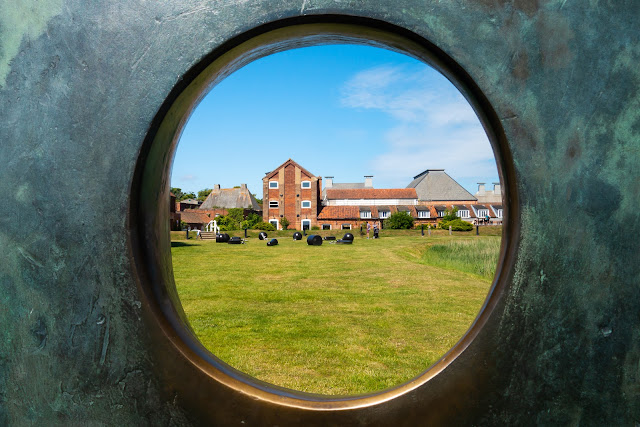Snape and across the fields to Iken
Snape was on our itinerary for today as we knew of a walk from the Maltings toward the village of Iken. Wildlife, the Maltings as a concert venue, the shops - all add to the area being great to visit.
As it`s name implies, the malting of barley was the function of the complex but in 1965, after 120 years, the malting of barley ceased, the direct result of inefficiencies of a large complex. The site was then purchased by Suffolk farmer George Gooderham.
Meanwhile the composer Benjamin Britten had founded the Aldeburgh Festival of Music and the Arts, five miles from Snape, (in 1948) and the festival quickly established an international reputation, outgrowing its small venues in Aldeburgh and other locations around the Suffolk coast. In the course of the 1950s and 60s Britten explored ways to build a larger venue to host the festival, and in 1965 he leased the largest building at Snape Maltings from George Gooderham to convert into the 810-seat Snape Maltings Concert Hall, which was opened by HM Queen Elizabeth in 1967. This became the home of the Aldeburgh Festival and a venue internationally renowned for the superb quality of its acoustic. It was one of the earliest examples of an industrial building being repurposed for arts use. The Hall suffered serious fire damage two years later, re-opening in time for the Aldeburgh Festival in 1970.
Visual art has been an important part of the Aldeburgh Festival since its inception. It was Britten's` belief that it should feature alongside the music, hence the full title Aldeburgh Festival of Music and the Arts. From the stage sets, to works shown in spaces in and around Snape Maltings, art has been married to the musical experience. This a view, through one piece of art, toward the Maltings, with another piece of art just in front of the building.
Another view showing the piece of art I used to get the image before. The Family of Man is an unfinished sculpture by Barbara Hepworth, which was created in the early 70s and unfinished at the time of the artist’s death. The complete sculpture is actually made up of 9 individual pieces. Two sets of the sculpture were cast; a complete set can be seen in the Yorkshire Sculpture Park, the remaining set being broken up into smaller groups. One of these smaller groupings is in Wakefield, the other is here at Snape Maltings on permanent loan from the Fitzwilliam Museum.
To Give Light. This work by conceptual artist Ryan Gander was made for the Great Exhibition of the North (2018) to celebrate the history of Northern innovation. It consists of 10 black sculptures made from a special glow-in-the-dark concrete material, each describing an object originally designed to emit or shine light. Each element is complete with a section of shiny mooring chain reminiscent of buoys or anchors, referencing the maritime history of the River Tyne and resonating with the Suffolk coast.
Together the sculptures appear like a series of gigantic board game pieces or trinkets from a charm bracelet, outsized as if belonging to the child of a giant.
Henry Moore: Reclining Figure (Bunched) 1961/69
A view across the river toward the Maltings as the tide had just begun to return.
Boats moored just below the bridge.
Lone tree against a blue sky, seen on our walk across the fields.
In an idyllic setting, the church of St Botolph in Iken. `Built on a bluff above the River Alde where Saxon St Botolph came ashore and established his monastery in 654 AD, this church has one of the most beautiful locations in Suffolk` - the blurb reads, and they are probable right!
The monastery built by Botolph was destroyed by Viking raiders in the winter of AD 869-70 two centuries after his death but the foundations of a mid-Saxon timber-framed building have been found, thought to be Botolph’s original church just south of where his monastery stood. So origins go back more than 1300 years. They don’t come much older.
The church you see today is Norman with 15th century porch and tower and Victorian chancel. But it had to be repaired after the devastating fire of 1968 when a spark set the thatched roof alight.
The altar. I guess this is quite modern.
The great font, one of the best in the East Anglian style. The angels that alternate with the evangelistic symbols carry the instruments of the Passion. Today it was all decorated ready for a wedding.
Part of a stone cross that’s been dated back to the late 9th or early 10th century. Discovered in 1977, it’s thought this could be the lower part of a large decorated stone cross, a marker for Botolph’s original church or the only surviving relic of a later Saxon church.














Comments